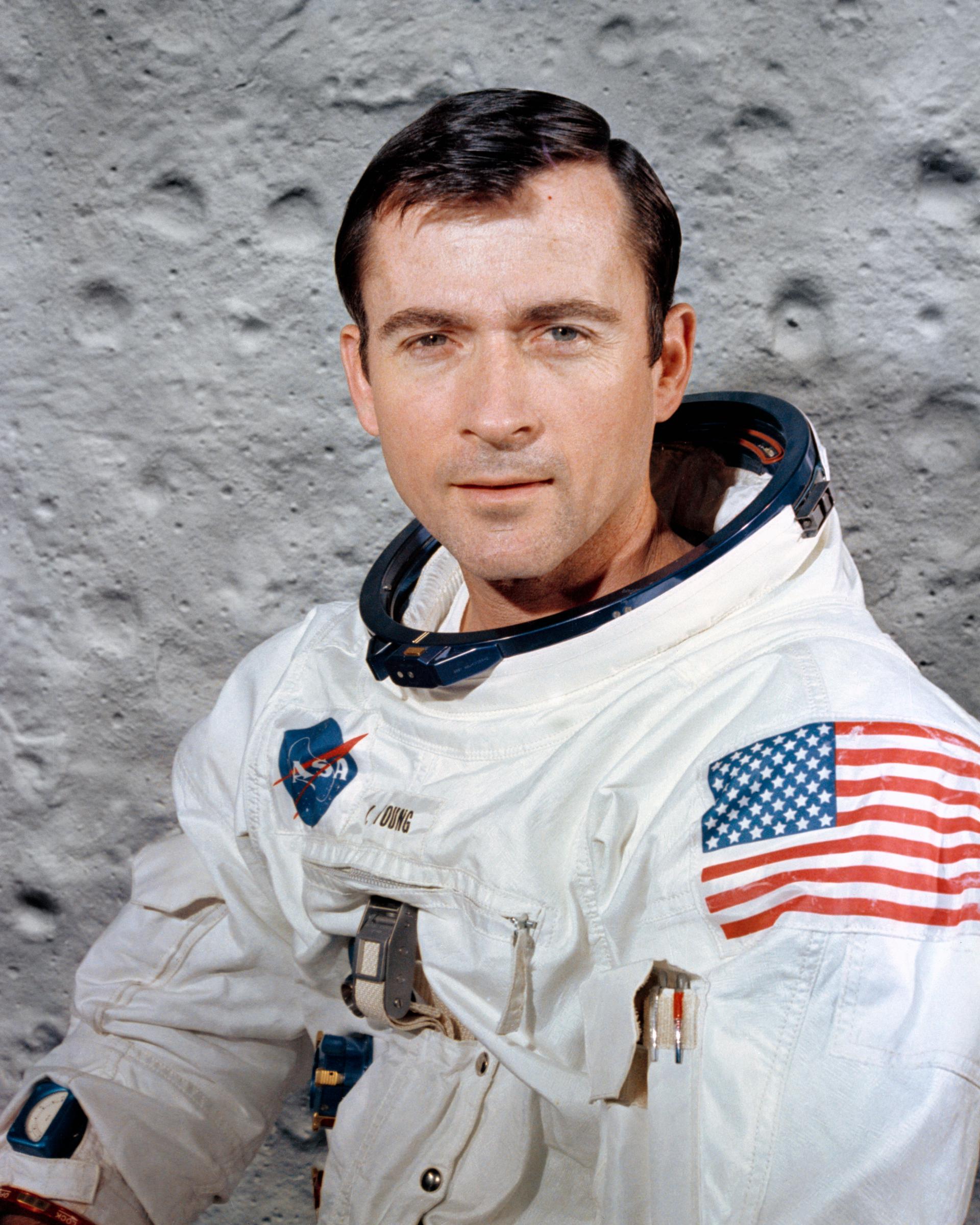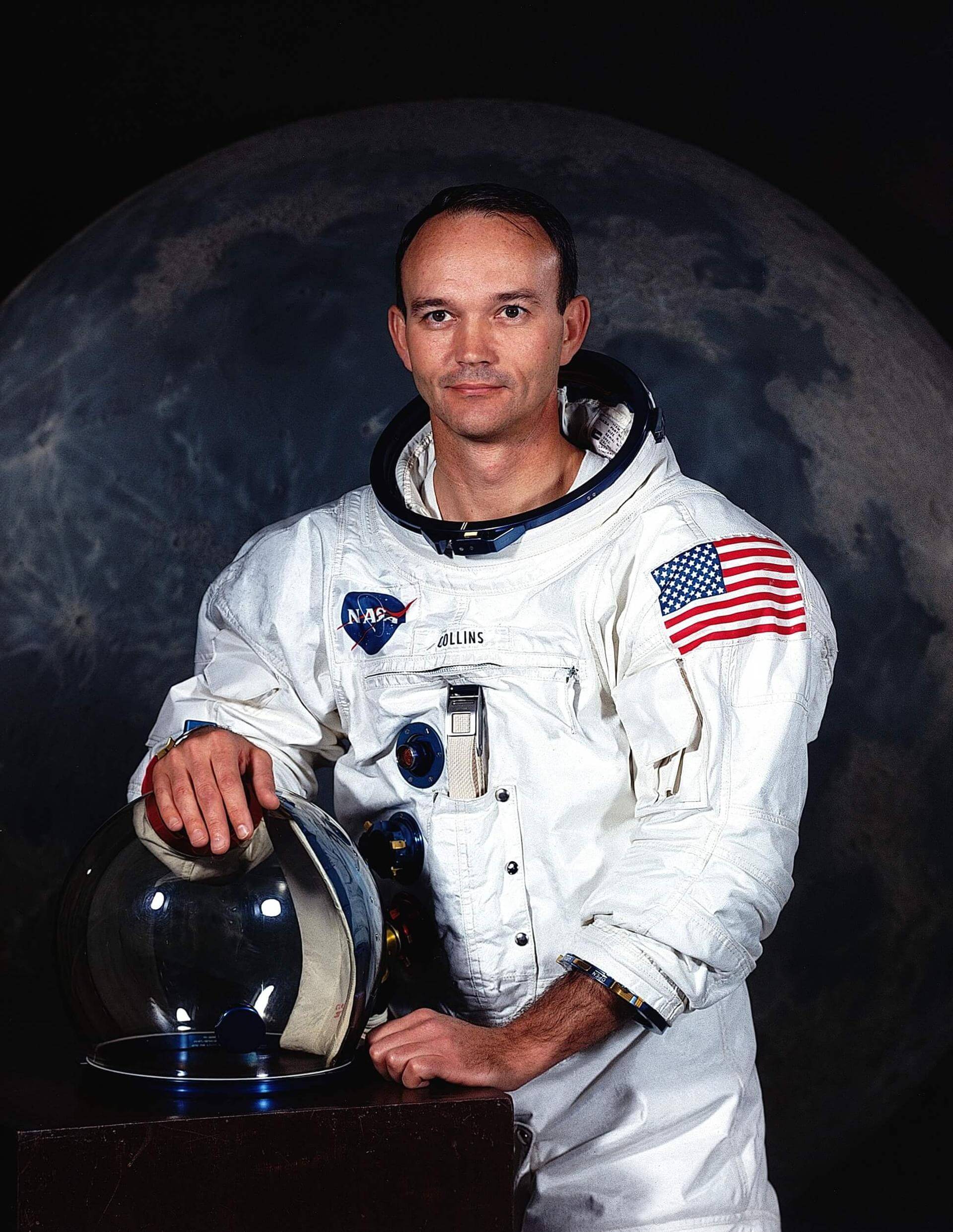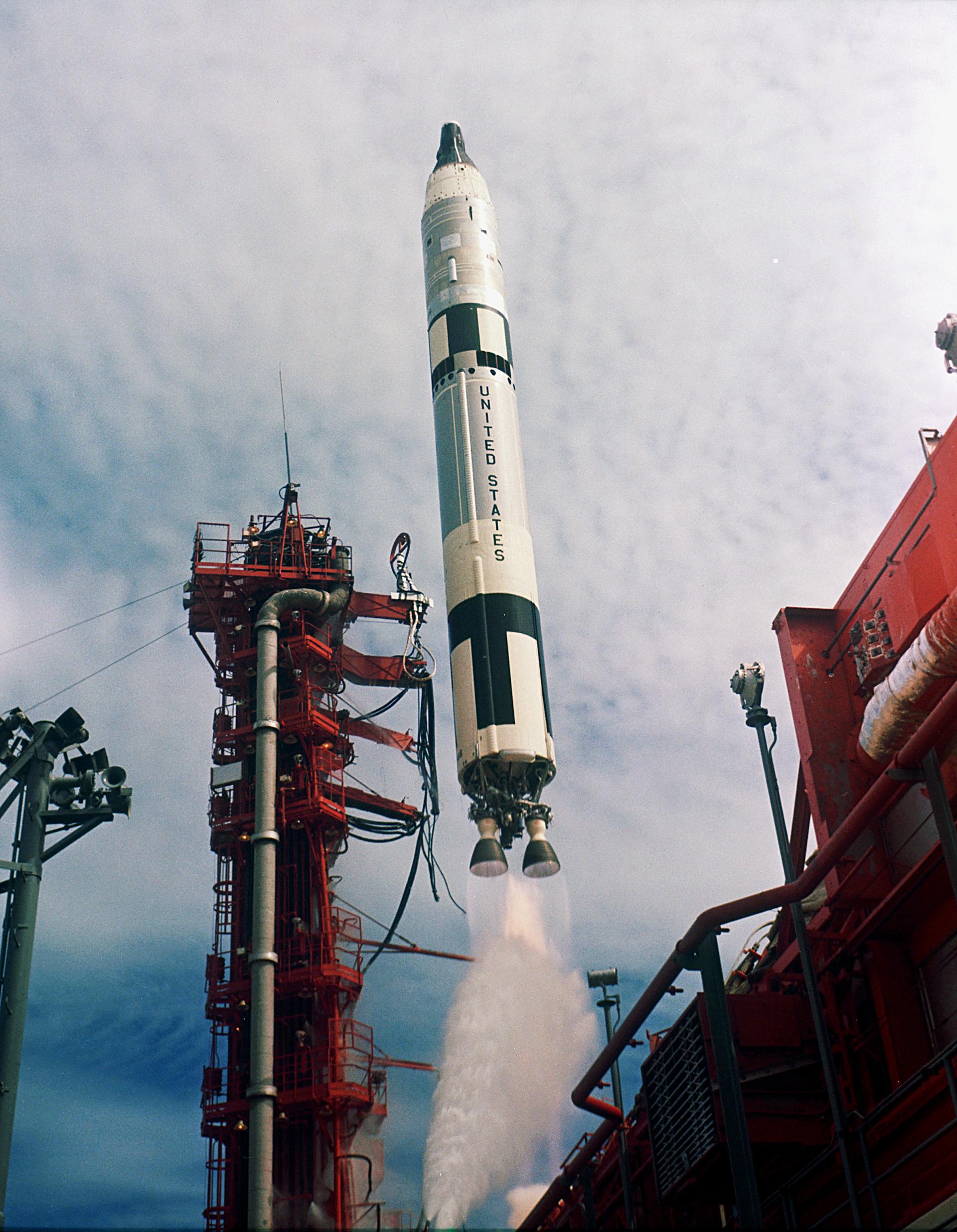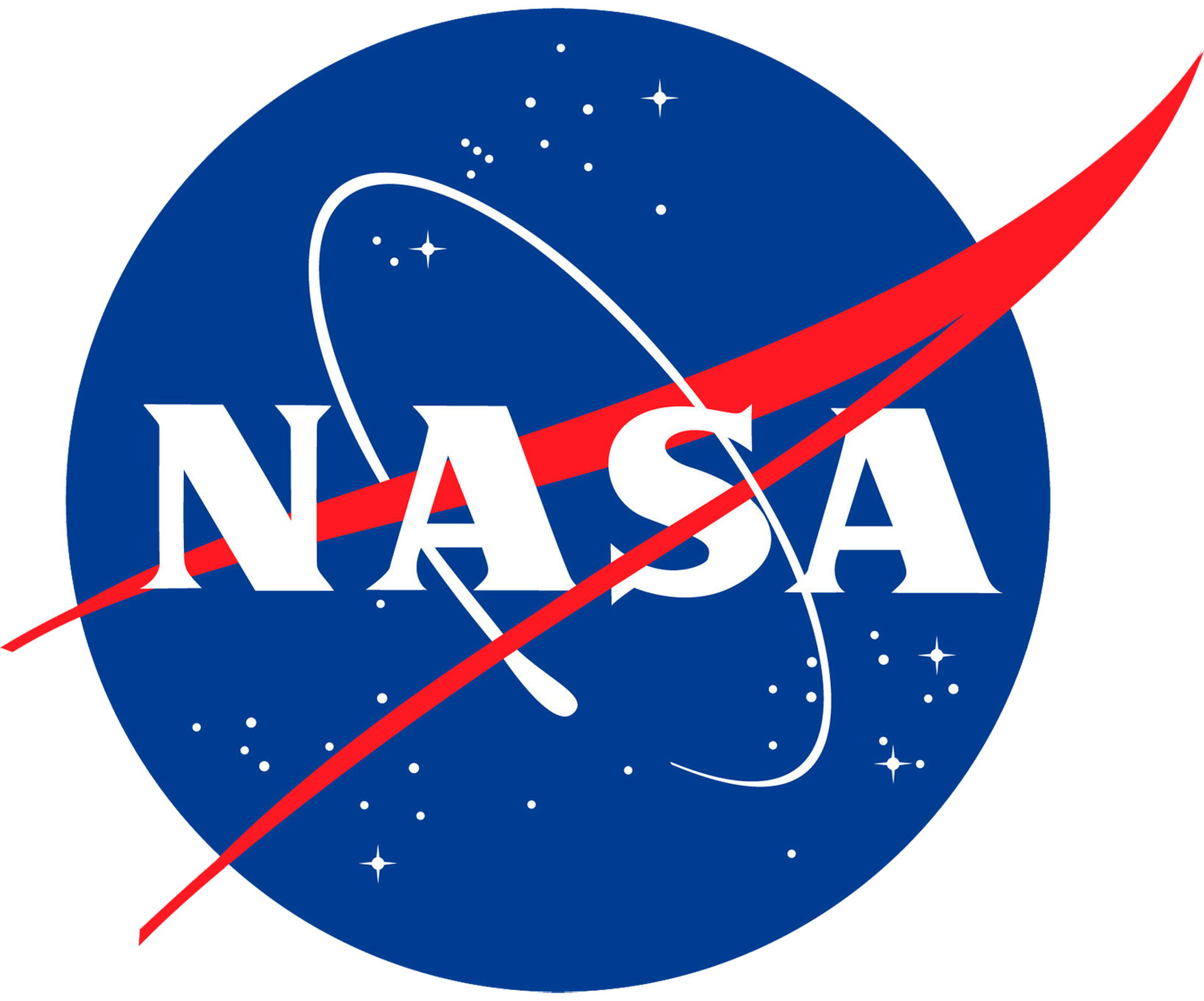Gemini X
Titan II GLV
National Aeronautics and Space Administration
Crew

John Young
- Birthday: 09/24/1930
- Role: Command Pilot
- Nationality: American
- First Flight: 03/23/1965
- Last Flight: 11/28/1983
John Watts Young was an American astronaut, naval officer and aviator, test pilot, and aeronautical engineer. He became the ninth person to walk on the Moon as Commander of the Apollo 16 mission in 1972. Young enjoyed the longest career of any astronaut, becoming the first person to fly six space missions (with seven launches, counting his lunar liftoff) over the course of 42 years of active NASA service. He is the only person to have piloted, and been commander of, four different classes of spacecraft: Gemini, the Apollo Command/Service Module, the Apollo Lunar Module, and the Space Shuttle.
In 1965, Young flew on the first manned Gemini mission, and commanded another Gemini mission the next year. In 1969 during Apollo 10, he became the first person to fly solo around the Moon. He drove the Lunar Roving Vehicle on the Moon’s surface during Apollo 16, and is one of only three people to have flown to the Moon twice. He also commanded two Space Shuttle flights, including its first launch in 1981, and served as Chief of the Astronaut Office from 1974 to 1987. Young retired from NASA in 2004. He died on January 5, 2018.

Michael Collins
- Birthday: 10/31/1930
- Role: Pilot
- Nationality: American
- First Flight: 07/18/1966
- Last Flight: 07/16/1969
Michael Collins (born October 31, 1930) (Major General, USAF, Ret.) was an American former astronaut and test pilot. Selected as part of the third group of fourteen astronauts in 1963, he flew into space twice. His first spaceflight was on Gemini 10, in which he and Command Pilot John Young performed two rendezvous with different spacecraft and undertook two extra-vehicular activities (EVAs, also known as spacewalks). His second spaceflight was as the Command Module Pilot for Apollo 11. While he stayed in orbit around the Moon, Neil Armstrong and Buzz Aldrin left in the Lunar Module to make the first manned landing on its surface. He is one of 24 people to have flown to the Moon. Collins was the fourth person, and third American, to perform an EVA; and is the first person to have performed more than one EVA.
Mission
Gemini X (Gemini 10)
- Type: Human Exploration
- Orbit: Low Earth Orbit
Gemini 10 was the eighth crewed mission of the NASA’s Project Gemini. It was commanded by Command Pilot John W. Young and Pilot Michael Collins. Gemini 10 achieved the objectives planned for the last two missions – rendezvous and docking with Agena target vehicle, and EVA. The mission started on July 18, 1966, 22:20:26 UTC and ended on July 21, 1966, 21:07:05 UTC.
Location
Rocket
National Aeronautics and Space Administration Titan II GLV
The Titan II GLV (Gemini Launch Vehicle) or Gemini-Titan II was an American expendable launch system derived from the Titan II missile, which was used to launch twelve Gemini missions for NASA between 1964 and 1966. Two unmanned launches followed by ten manned ones were conducted from Launch Complex 19 at the Cape Canaveral Air Force Station, starting with Gemini 1 on April 8, 1964.
Agency
National Aeronautics and Space Administration
The National Aeronautics and Space Administration is an independent agency of the executive branch of the United States federal government responsible for the civilian space program, as well as aeronautics and aerospace research. NASA have many launch facilities but most are inactive. The most commonly used pad will be LC-39B at Kennedy Space Center in Florida.


